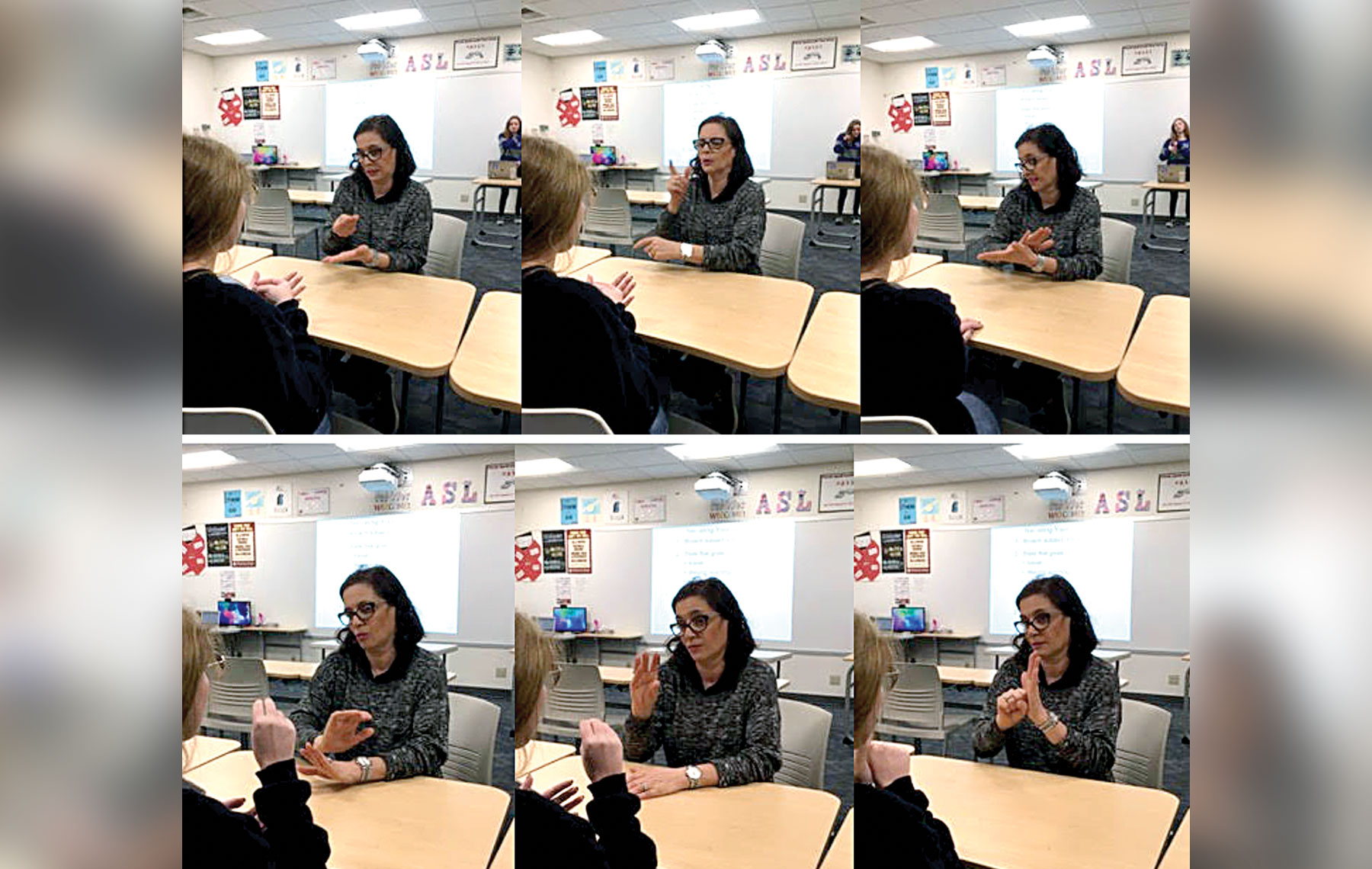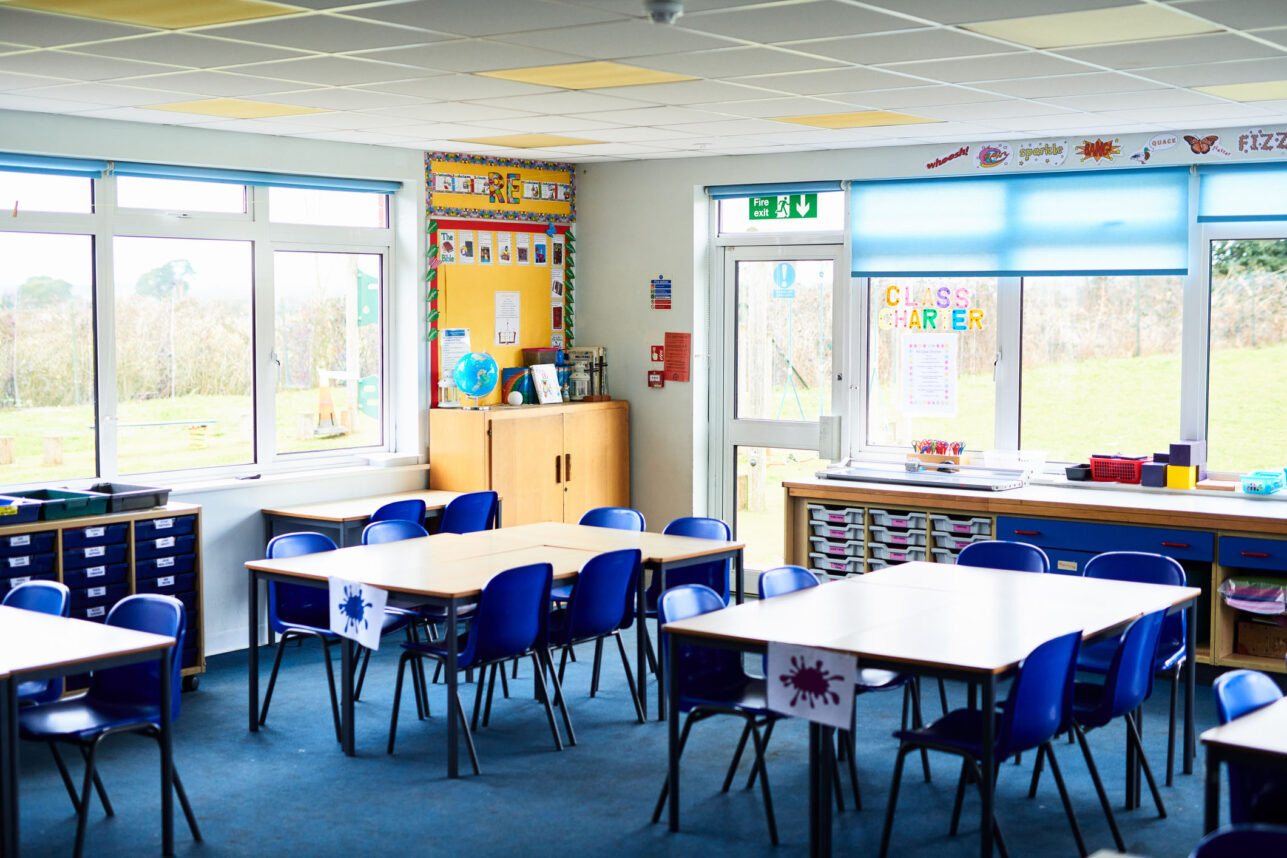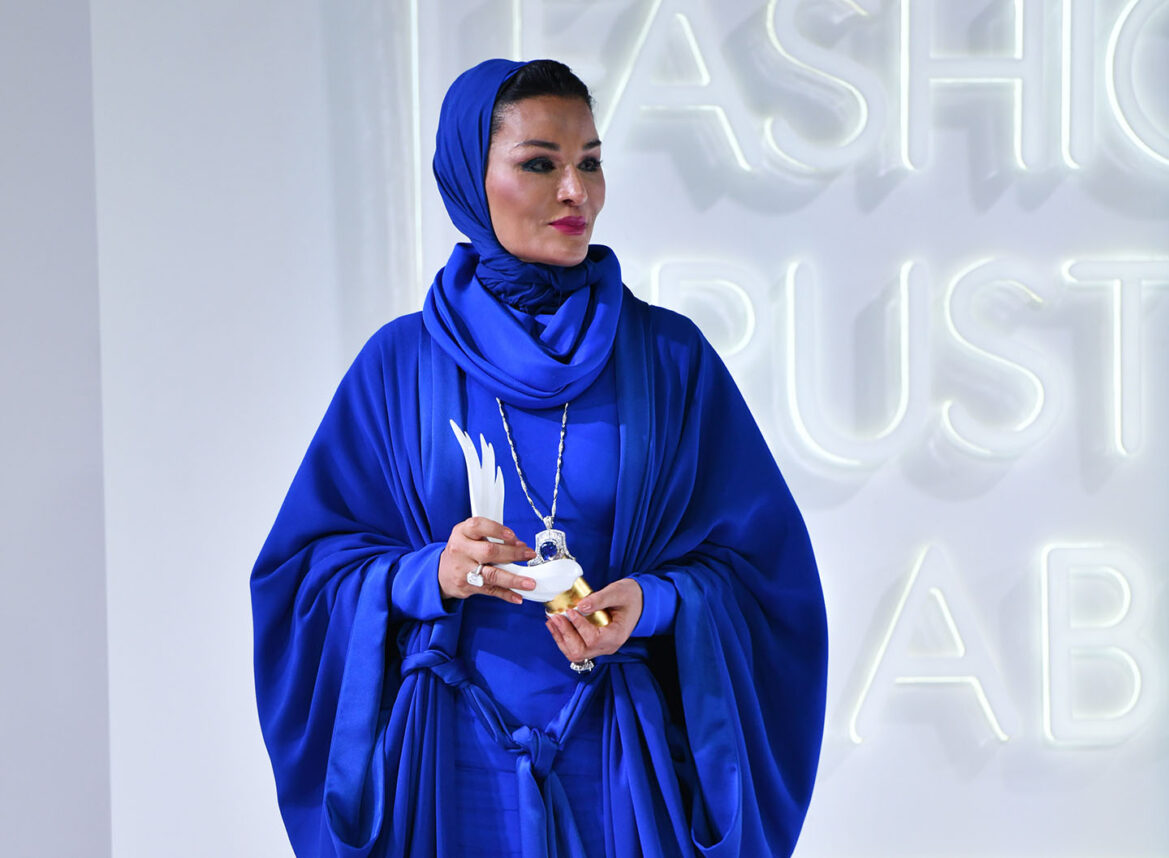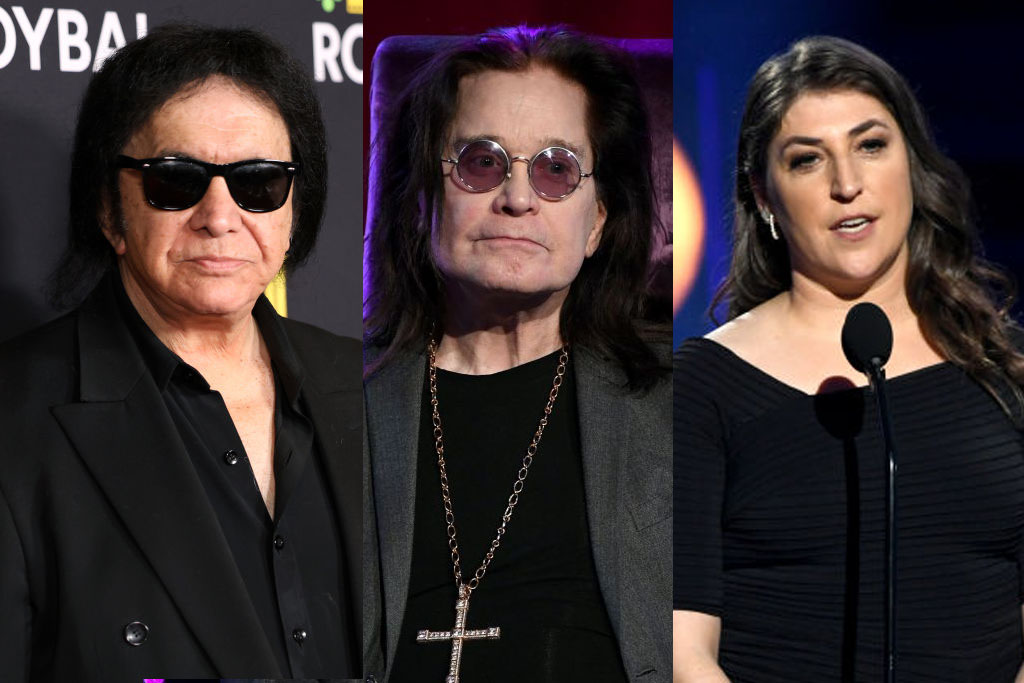 Instructor Solange ‘Shula’ Dichter teaching ASL.
Instructor Solange ‘Shula’ Dichter teaching ASL. At de Toledo High School, most of the teachers encourage their students to use their voices to express themselves. But things are a bit different in Solange “Shula” Dichter’s classroom. The sign on her door reads: “Keep Voice Out of This Classroom.” That’s because Dichter, who is profoundly deaf, teaches American Sign Language, and according to her, “ASL is a visual language and using voice is inappropriate. Students receive information through eyes, not ears.”
Dichter, a native of Morocco who lived in Israel for 22 years before moving to the United States, has been teaching ASL at the West Hills-area Jewish high school for the past 12 years. The ASL program began several years earlier, however, when the late philanthropists Shirley and Aaron Kotler, who supported a number of Los Angeles-area Jewish day schools, made a major gift to the school (then called New Community Jewish High School) in memory of Shirley’s brother, Samuel Intrator, who was deaf. It’s why the program’s official name is SAMI, for Samuel and Miriam Intrator.
An elective subject at de Toledo, students can begin studying ASL as early as freshman year. This year, Dichter has 27 students in four classes. On a recent morning, the students in ASL 3, all juniors and seniors, were making videos sharing their bucket lists. On the walls were colorful, handmade posters of people including Oscar-winning actress Marlee Matlin and co-founder of the National Theatre of the Deaf Bernard Bragg, both deaf, and Thomas Hopkins Gallaudet, who co-founded the first school for deaf children in the United States.
The class began with Dichter reviewing the names of continents and countries with the students. Even with fairly textbook material like this, Dichter is very expressive when she signs.
“The biggest challenge is to consistently encourage students to use facial expression and to consistently encourage students to communicate in the target language (ASL) rather than talking with voice,” Dichter wrote in an email exchange with the Journal. “Facial expression in ASL is like voice inflection in spoken languages. Signing without facial expression is like speaking in [a] monotonous tone,” she added.
The students also watched a video of two young men using ASL. They then broke up and practiced their bucket list presentations on their own. Dichter made the rounds, helping each student make refinements with ASL’s five parameters: hand shape, palm orientation, location, movement and facial expression.
A change in just one of these can mean an entirely different word as Dichter explained using the words “please” and “sorry,” which are signed identically except for hand shape.
Dichter is well liked and respected by her students. She has a warm personality and is passionate about deaf culture and ASL, which she learned when she first moved to the United States in 1987. (Every country has a unique sign language, including its own finger spelling system.)
ASL is not confined to the classroom at de Toledo. It is a very visible part of the school culture. Students often interpret at school functions, including the twice- weekly town hall gatherings, as well as at special events such as the annual gala. Even when they are not interpreting on a public stage, they interpret for Dichter.
“Watching my students go beyond passion and dedicate themselves to learning a language that creates a more inclusive society is profoundly meaningful. It really inspires me to see that ASL has become an integral part of students’ lives.” — Solange “Shula” Dichter
Sydney Greenspun, 17, a senior who began her ASL studies as a sophomore, is among the students who regularly interpret. For her, learning ASL has been transformative.
“Once I started ASL, I was more involved and aware of the world around me,” Greenspun, who is also president of the school’s deaf culture club,” told the Journal. “It’s something I am passionate about and something I could find, not my identity in, but find a way to do something that makes me happy and I know I can use to impact others.”
Greenspun has had multiple occasions to use ASL outside of school, none of them planned. Most memorable was signing with a girl a few years younger than herself at a party. “She walked by and I began signing to her,” Greenspun recalled. “She got so excited. She hadn’t met someone outside her family circle who signed.”
ASL has become such an important part of Greenspun’s life that it informed her college decision. She does not plan to become a professional interpreter, although half a dozen de Toledo graduates have gone this route. But she considered only schools that offer ASL.
“Watching my students go beyond passion and dedicate themselves to learning a language that creates a more inclusive society is profoundly meaningful,” Dichter wrote. “It really inspires me to see that ASL has become an integral part of students’ lives.”
“The mission of de Toledo High School is to raise the next generation of Jewish leaders,” head of school Mark Shpall, said. “One of the underserved communities in our nation are those with profound hearing loss. Our students, through our ASL program, are able to learn the skills necessary to help bridge the communication gap between the hearing and the deaf world. They not only learn these communication skills but learn about deaf culture, which helps teach empathy.”






















 More news and opinions than at a Shabbat dinner, right in your inbox.
More news and opinions than at a Shabbat dinner, right in your inbox.